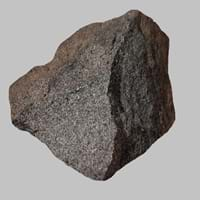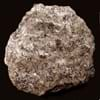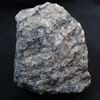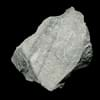Definition
Slate is a fine-grained, foliated, homogeneous metamorphic rock derived from an original shale-type sedimentary rock composed of clay or volcanic ash through low-grade regional metamorphism
Pyrolite is an igneous rock consisting of about three parts of peridotite and one part of basalt
Origin
England
Pike County, U.S
Discoverer
Unknown
Unknown
Etymology
From Old French esclate, from esclat (French éclat)
From the chemical and mineralogical composition of the upper mantle of the Earth
Class
Metamorphic Rocks
Igneous Rocks
Sub-Class
Durable Rock, Medium Hardness Rock
Durable Rock, Medium Hardness Rock
Group
Not Applicable
Plutonic
Other Categories
Fine Grained Rock, Opaque Rock
Coarse Grained Rock, Opaque Rock
Texture
Foliated
Phaneritic
Color
Black, Brown, Buff, Green, Light to Dark Grey, Purple, Red, Shades of Blue
Dark Greenish - Grey
Durability
Durable
Durable
Scratch Resistant
Yes
Yes
Appearance
Dull
Rough and Shiny
Interior Uses
Bathrooms, Decorative Aggregates, Entryways, Floor Tiles, Flooring, Homes, Hotels, Interior Decoration, Kitchens, Stair Treads
Decorative Aggregates, Interior Decoration
Exterior Uses
As Building Stone, As Facing Stone, Garden Decoration, Paving Stone
As Building Stone, As Facing Stone, Garden Decoration, Paving Stone
Other Architectural Uses
Curbing
Curbing
Construction Industry
As Dimension Stone
As Dimension Stone, Cobblestones
Medical Industry
Not Yet Used
Not Yet Used
Antiquity Uses
Artifacts, Monuments, Sculpture, Small Figurines
Artifacts, Monuments, Sculpture
Commercial Uses
Blackboards, Commemorative Tablets, Laboratory bench tops, Standard material for the bed of Billiard table, Standard material for the beds of Pool and Snooker table, Tombstones, Used in aquariums, Writing Slates
Creating Artwork, Gemstone, Jewelry, Source of Chromite, Platinum, Nickel and Garnet, Source of Diamonds
Types
Not Available
Dunite, Wehrlite, Harzburgite, Lherzolite
Features
Easily splits into thin plates, Surfaces are often shiny, Very fine grained rock
Constitutes upper part of the Earth's mantle, Generally rough to touch, Is one of the oldest rock
Archaeological Significance
Famous Monuments
Data Not Available
Data Not Available
Famous Sculptures
Data Not Available
Data Not Available
Formation
Slate is a low grade metamorphic rock that is generally formed by metamorphosis of mudstone or shale, under relatively low pressure and temperature conditions.
Pyrolite is a fine-grained, hard rock which is a type of metasomatite, essentially altered basalt. It forms with or without crystallization, either below the surface as intrusive rocks or on the surface as extrusive rocks.
Mineral Content
Apatite, Biotite, Chlorite, Feldspar, Graphite, Hematite, Kaolinite, Magnetite, Pyrite, Tourmaline, Zircon
Amphibole, Chromite, Garnet, Magnesium, Olivine, Phlogopite, Plagioclase, Pyroxene
Compound Content
Aluminium Oxide, CaO, Iron(III) Oxide, Potassium Oxide, MgO, Sodium Oxide, Silicon Dioxide, Titanium Dioxide
Ca, Fe, Mg, Potassium, Silicon Dioxide, Sodium, Titanium Dioxide
Types of Metamorphism
Burial Metamorphism, Cataclastic Metamorphism, Regional Metamorphism
Burial Metamorphism, Cataclastic Metamorphism, Contact Metamorphism, Hydrothermal Metamorphism, Impact Metamorphism, Regional Metamorphism
Types of Weathering
Biological Weathering, Chemical Weathering, Mechanical Weathering
Biological Weathering, Chemical Weathering, Mechanical Weathering
Types of Erosion
Coastal Erosion, Glacier Erosion, Water Erosion, Wind Erosion
Chemical Erosion, Coastal Erosion, Glacier Erosion, Sea Erosion, Water Erosion, Wind Erosion
Grain Size
Very fine-grained
Coarse Grained
Fracture
Splintery
Irregular
Streak
Light to dark brown
White
Porosity
Less Porous
Less Porous
Specific Gravity
2.65-2.8
3-3.01
Transparency
Opaque
Translucent to Opaque
Density
2.6-2.8 g/cm3
3.1-3.4 g/cm3
Resistance
Heat Resistant, Impact Resistant, Pressure Resistant, Wear Resistant
Heat Resistant, Pressure Resistant, Wear Resistant
Deposits in Eastern Continents
Asia
China, India, Turkey
China, India, Indonesia, Kazakhstan, Russia, South Korea, Thailand, Turkey
Africa
Not Yet Found
Morocco, South Africa
Europe
Belgium, France, Germany, Italy, Norway, Portugal, Spain, United Kingdom
Finland, France, Georgia, Germany, Great Britain, Italy, Kazakhstan, Netherlands, Norway, Spain, Switzerland, Venezuela
Others
Arctic
Not Yet Found
Deposits in Western Continents
North America
USA
Canada, USA
South America
Brazil
Brazil
Deposits in Oceania Continent
Australia
Not Yet Found
New Zealand, Western Australia
All about Slate and Pyrolite Properties
Know all about Slate and Pyrolite properties here. All properties of rocks are important as they define the type of rock and its application. Slate belongs to Metamorphic Rocks while Pyrolite belongs to Igneous Rocks.Texture of Slate is Foliated whereas that of Pyrolite is Phaneritic. Slate appears Dull and Pyrolite appears Rough and Shiny. The luster of Slate is dull while that of Pyrolite is shiny. Slate is available in black, brown, buff, green, light to dark grey, purple, red, shades of blue colors whereas Pyrolite is available in dark greenish - grey colors. The commercial uses of Slate are blackboards, commemorative tablets, laboratory bench tops, standard material for the bed of billiard table, standard material for the beds of pool and snooker table, tombstones, used in aquariums, writing slates and that of Pyrolite are creating artwork, gemstone, jewelry, source of chromite, platinum, nickel and garnet, source of diamonds.










